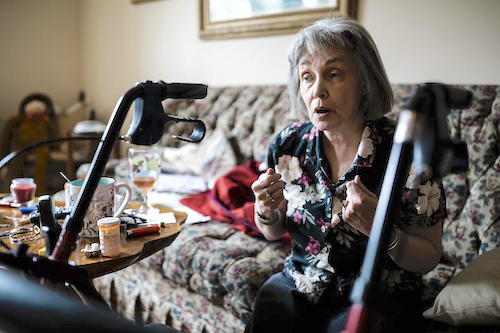
KARALOFTON / WEST VIRGINIA PUBLIC BROADCASTING
The decline of coal in Central Appalachia has led to an out-migration of people who are needed to take care of the region’s aging population, Kara Leigh Lofton reports for West Virginia Public Broadcasting.
Programs that “serve the state’s aging population are overburdened, with waitlists that can stretch months or years, or require applicants to qualify for Medicaid,” Lofton reports. “This leaves the older population dependent on younger family members to fill caregiving roles. Meanwhile, to find work, the state’s young people are leaving the state and thus moving away from their elders, causing those over age 65 to be the fastest-growing segment of West Virginia’s population.”
This chain of events “is creating a critical gap in services needed by the elderly,” Lofton says, citing a recent report by the state Department of Health and Human Resources. “In West Virginia today, about 16 percent of the population is 65 and older, according to the DHHR report. It’s projected to grow to about a quarter of the total population by 2030. So who is going to pay for the services needed by aging West Virginians and who will help care for them if the bulk of the young people leave?”
Written by Heather Chapman













![Foothills-Bundle] Foothills-Bundle](https://thelevisalazer.com/wp-content/uploads/2020/05/Foothills-Bundle-422x74.jpg)




